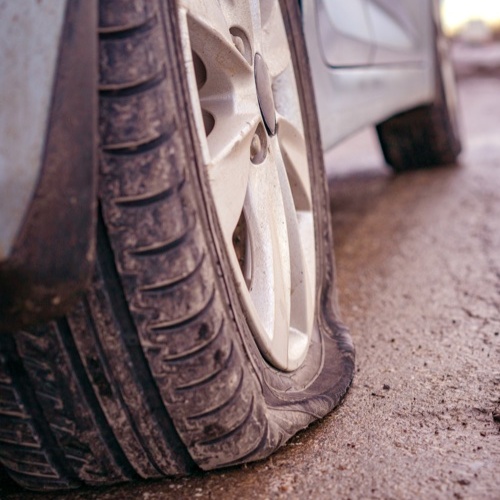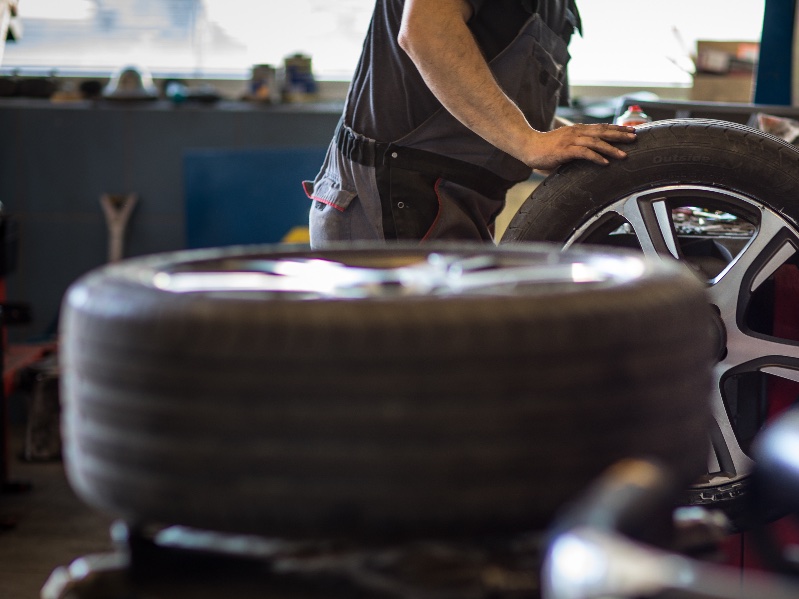
Tire Maintenance
“The wheels on the bus go round and round, round, and round ….”. You most likely are familiar with the nursery school song. And you probably know that the wheels on the bus can’t go round and round without good tires, right? Yes, tire maintenance is important, whether it is on that bus or your personal vehicle.
Should tires be serviced regularly?
The tires on your car have constant contact with the road. So, yes, you should check your tires yourself once a month. A regular routine of checking your tires is an important step for your safety and protecting your investment. The tires affect the handling, the ride, and the safety of you, your passengers, and those around you. For the best performance in these areas, including braking, routine tire services are a must.
Tire services include maintaining the correct air pressure and tread depth. Keeping them balanced and the wheels properly aligned. This is even more important if you’re planning a road trip, and hopefully, you can avoid having unexpected flat tires or blowouts.
But what if you do have an unexpected flat tire, or you run over something in the road that causes a blowout? A mechanic may suggest just patching the tire, but what is a tire patch.
Of all the tire services available, a tire patch is probably the least expensive. A tire patch is when a tire technician sticks a piece of adhesive-backed rubber to the inside of a tire that has a hole. Another option for inexpensive repair tire services is a tire plug.
With a tire plug, the tire technician pushes a sticky object from the outside of the damaged area. It expands and is adjusted until holds air. Of these two types of tire services, the tire patch is the stronger one. Well, can you drive with a damaged tire, or should I just replace a damaged tire?
First, never drive on a flat tire! If absolutely necessary, drive the shortest distance possible that gets you to the safest place to pull over. If a tire is damaged, such as having a chunk of rubber missing, you can keep driving, but you’re putting yourself, your passengers, and other cars on the road at risk.
Driving on damaged tires reduces the ability to handle your vehicle on the road. It can damage the front-end structure of your vehicle, like the alignment, brakes, wheel balance, and more, including the steering. It is not worth delaying getting proper tire services to keep driving a vehicle in poor tire condition.

What types of tire damages can be repaired?
Whether you drive every day or just once a month, your car is at risk of hitting a pothole or running over broken glass, a nail, a screw, or any number of other materials that can damage or destroy a tire. Professional tire services can repair a damaged a punctured tire with the following condition:
The location and severity of the puncture will determine what tire services are possible, or if the tire needs to be replaced. A puncture in the tread area that is ¼” or smaller in diameter can usually be repaired.
What types of tire damages cannot be repaired?
To the untrained eye, professional tire services of repairing a tire with these two issues cannot be done:
- A RUN-FLAT TIRE?
A flat tire with 15psi or less is not repairable.
- SIDE BUBBLES
A bubble in the sidewall is typical of a high impact, like running over a curb, hitting a pothole, or driving too fast over railroad tracks and speed bumps. No matter how small the bubble is, repairing tire services is not possible, it will need to be replaced.
Other times that repair tire services are not possible is if there are two punctures that are a minimum of 16” apart. A tire with a puncture larger than ¼”, or 2 punctures, or the puncture is in the sidewall, replacing the tire is recommended.
How do you repair a tire, what is the process to repair a tire?
Repair tire services can be completed within 90 minutes using the following steps:
- Identify & Assess Damage
- Unmount the tire and thoroughly inspect the interior and exterior of the tire.
- Prepare the Area
- If repair tire services are possible, if the item that caused the puncture is still in the tire, remove it (nail, screw, etc). Then prep the interior surface using a rubber buffer and pre-buffer cleaner. Then scrape off any debris.
- Remove Damages Cords & Stabilize Area
- Using the low speed on a carbide cutter and drill into the punctured area from the interior so that the damaged cords can be removed. Repeat the process from the exterior and lean the rubber and steel dust/shaving with a vacuum on both the interior and exterior.
- Apply Rubber Cement
- Apply rubber cement to the interior at the puncture area.
- Install Rubber Plug and/or Tire Patch
- Plug the hole from the interior side, pulling the plug through the puncture area. Cut off any excess amount of the plug from the exterior side, making it flush with the tread.
- Apply Sealer
- Apply sealer to the lining on the buffed area.
- Mount and Rebalance
- Mount the tire and inflate to proper air pressure, then rebalance. Check for any leaks before driving.
In Summary
In addition to your own monthly tire check, having them inspected by professional tire services is recommended. Requesting tire services while having your routine oil change service should become a routine for every car owner.
L.A. NTX Transmissions helps with tires in Inglewood, CA. Call __PHONE__ for services.
